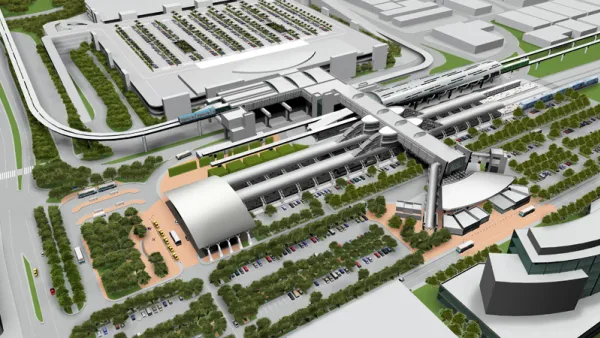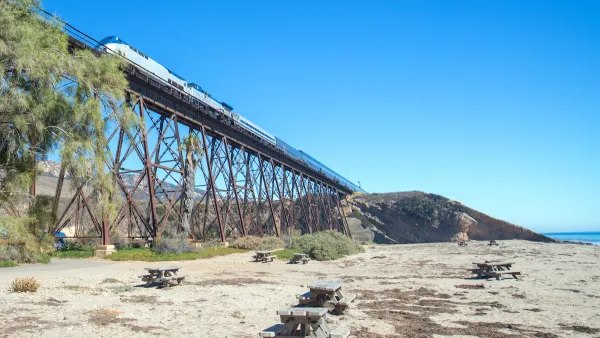According to a new study out this week by research group INRIX, urban traffic congestion in the U.S. plummeted last year by 30 percent over the previous year. Angie Schmitt summarizes the surprising findings, and investigates what the cause may be.
Released this week, INRIX's Annual Traffic Scorecard analyzed congestion on highways in America's 100 largest cities and found that 70 metropolitan areas saw declines in their traffic congestion in the past year. "In addition to high gas prices and poor economic performance, INRIX
attributed vanishing congestion in part to a decline in road
construction brought on by the completion of most stimulus projects, as
well as uncertainty around federal infrastructure funding and anemic
local and state budgets," notes Schmitt, who raises some additional questions about the true causes for the decline.
"National declines in driving or increases in transit ridership were not mentioned as contributing factors. Still, it's somewhat mysterious. Was the economy really so much worse
in 2011 than 2010? Growth did slow down some in that time, but it was still positive. Or is something else going on here - like the 'decoupling' of driving from economic fluctuations?"
INRIX's study provides a lot to chew on. In addition to the nationwide statistics, the scorecard also ranked the individual U.S. cities with the worst traffic congestion, the most congested corridors, and the best and worst times to commute.
Summarizing the results in The Atlantic Cities, Tyler Falk reports that Honolulu has won the dubious prize of most congested city. "INRIX changed their methodology
this year look [sic] at travel time for individuals rather than overall
congestion, which rocketed Honolulu to the top of the list (from 37th
last year)." Los Angeles and San Francisco rounded out the top three.
FULL STORY: Analysts: Traffic Congestion Down 30 Percent Last Year

Analysis: Cybertruck Fatality Rate Far Exceeds That of Ford Pinto
The Tesla Cybertruck was recalled seven times last year.

National Parks Layoffs Will Cause Communities to Lose Billions
Thousands of essential park workers were laid off this week, just before the busy spring break season.

Retro-silient?: America’s First “Eco-burb,” The Woodlands Turns 50
A master-planned community north of Houston offers lessons on green infrastructure and resilient design, but falls short of its founder’s lofty affordability and walkability goals.

Test News Post 1
This is a summary

Analysis: Cybertruck Fatality Rate Far Exceeds That of Ford Pinto
The Tesla Cybertruck was recalled seven times last year.

Test News Headline 46
Test for the image on the front page.
Urban Design for Planners 1: Software Tools
This six-course series explores essential urban design concepts using open source software and equips planners with the tools they need to participate fully in the urban design process.
Planning for Universal Design
Learn the tools for implementing Universal Design in planning regulations.
EMC Planning Group, Inc.
Planetizen
Planetizen
Mpact (formerly Rail~Volution)
Great Falls Development Authority, Inc.
HUDs Office of Policy Development and Research
NYU Wagner Graduate School of Public Service



























